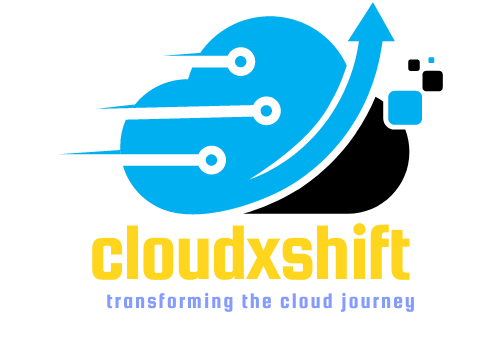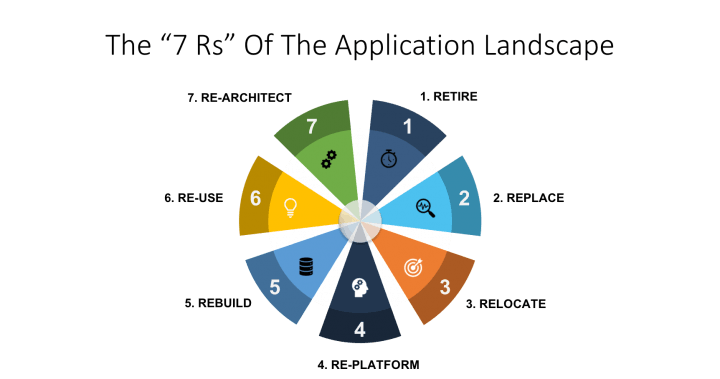-
7 R’s of Cloud Migration: Strategies, Pros and Cons
Rehost (lift and shift) Replatform (lift, tinker, and shift) Repurchase (drop and shop) Refactor (re-architect) Rebuild (re-create) Retain (maintain) Replace Cloud migration is the process of moving an organization’s IT infrastructure, applications, and data to a cloud computing environment. It offers several benefits, including cost savings, increased agility, scalability, and improved security. However, cloud migration can be a complex and challenging process that requires careful planning and execution. The 7 R strategy of cloud migration provides a framework to guide organizations through the process of moving to the cloud. Rehost (lift and shift) The rehosting or lift-and-shift approach is the simplest and quickest way to migrate to the cloud. It…
-
AWS RDS:A Comprehensive Guide to Database Management
Introduction RDS Components RDS Interfaces RDS Multi-AZ & Read Replicas RDS Backups and Snapshots RDS Pricing Conclusion Introduction Amazon Web Services (AWS) provides a wide range of services for businesses to manage their IT infrastructure and applications in the cloud. One of the most popular services is Amazon Relational Database Service ( AWS RDS), which offers managed database services for several popular database engines, including MySQL, PostgreSQL, and SQL Server. In this comprehensive guide, we’ll explore the key features of Amazon RDS, including its components, interfaces, security, backup, monitoring, and pricing. RDS Components RDS is made up of several components, each of which plays an important role in managing your…
-
Cloud Native Applications and Microservices
Introduction: Cloud native applications and microservices are gaining popularity in the software development world due to their ability to provide faster time to market, improved scalability, and reduced costs. In this article, we will explore the key characteristics of cloud native applications and microservices, their advantages, and the technologies and best practices for building them. I. Definition of Cloud Native Applications and Microservices Cloud native applications refer to applications that are designed to run natively in the cloud, taking advantage of the cloud’s dynamic nature and scalability. Microservices, on the other hand, are a software architectural style that structures an application as a collection of loosely coupled services, each with…
-
DevOps Adoption and Implementation
Introduction What is DevOps? Benefits of DevOps Adoption and Implementation Getting Started with DevOps Adoption and Implementation Tips for Successful DevOps Adoption and Implementation Common Challenges in DevOps Adoption and Implementation Conclusion Introduction As organizations continue to shift towards cloud-based architectures, the need for efficient and effective software development and deployment processes has become increasingly important. DevOps is an approach that aims to bridge the gap between development and operations teams, enabling organizations to develop and deploy software more quickly and reliably. In this article, we will discuss the benefits of DevOps adoption and implementation, and provide guidance on how to get started. What is DevOps? DevOps is a set…
-
Cloud Migration: Avoid 5 Common Mistakes
Introduction Mistake 1: Lack of Clear Objectives Mistake 2: Inadequate Planning Mistake 3: Insufficient Data Preparation Mistake 4: Overlooking Security Concerns Mistake 5: Failure to Optimize Cloud Infrastructure Conclusion Introduction Cloud migration is the process of transferring data, applications, and other business operations to a cloud computing environment. It offers a wide range of benefits such as scalability, cost savings, and increased efficiency. However, it also presents several challenges that can be costly if not addressed properly. In this article, we will discuss the five most common mistakes to avoid during cloud migration. Importance of avoiding mistakes during cloud migration Cloud migration is a complex process that involves many moving…
-
Cloud Migration Plan: Key Considerations
Understand Your Business Objectives Analyze Your Applications and Infrastructure Choose the Right Cloud Provider and Services Develop a Comprehensive Migration Plan Implement Automation and DevOps Practices Ensure Data Security and Compliance Test and Validate Your Migration Train Your Staff and Users As more and more businesses embrace the benefits of cloud computing, cloud migration has become an essential part of modern IT strategy. Whether you are moving your applications, data, or infrastructure to the cloud, a successful cloud migration requires careful planning and execution. In this article, we will discuss the key considerations that every business should keep in mind when planning a cloud migration. Understand Your Business Objectives Before…
-
Cloud Migration Strategies to optimize cost
Cloud Migration Strategies Choose Cloud Right Provider Optimzie Resources Use Cloud-native Tools Implement Cost Managment Policies Adopt DevOps and Automation Practices Take Advantage of Discounts and Credits Monitor and Optimize Cloud Costs Consider Multi-Cloud Strategies As businesses increasingly move their workloads to the cloud, cost optimization has become a crucial aspect of cloud migration strategy. While cloud computing offers many benefits, including scalability, flexibility, and improved performance, it can also be costly if not managed properly. In this article, we will explore some strategies that businesses can use to optimize costs in their cloud migration strategy. Choose Cloud Right Provider Choose the Right Cloud Provider and Service Model One of…
-
The Risks and Challenges of Cloud Migration
Introduction Cloud migration has become increasingly popular among businesses looking to modernize their IT infrastructure and take advantage of the many benefits offered by cloud computing, such as scalability, agility, and cost savings. However, cloud migration also comes with risks and challenges that businesses need to address in order to ensure a successful migration. In this article, we will explore the risks and challenges of cloud migration and provide strategies for overcoming them. Security Risks One of the biggest risks associated with cloud migration is security. Moving data and applications to the cloud requires businesses to trust their cloud provider with sensitive data, and any breach or cyberattack can result…
-
The Impact of Cloud Migration on IT Operations and Management
Cloud computing has revolutionized the way businesses approach IT infrastructure and operations. With the benefits of scalability, flexibility, and cost savings, many organizations are now moving their applications, data, and infrastructure to the cloud. However, this shift to the cloud also has a significant impact on IT operations and management. In this article, we will discuss the key ways in which cloud migration impacts IT operations and management, and how organizations can adapt to these changes. Change in Infrastructure Management One of the most significant impacts of cloud migration on IT operations is a change in infrastructure management. In a traditional on-premises IT environment, the IT team is responsible for…
-
Kubernetes:Revolutionizing App Development and Delivery
Indroduction Kubernetes Architecture Kubernetes Benefits Kubernetes and Application Development Kubernetes and Application Delivery Kubernetes and Release Management Conclusion Indroduction Kubernetes is an open-source container orchestration system that automates the deployment, scaling, and management of containerized applications. It was originally developed by Google and is now maintained by the Cloud Native Computing Foundation (CNCF). As the world of technology continues to evolve, businesses must keep up with the latest advancements to stay ahead of the competition. One such technology that is revolutionizing the application development, delivery, and release management processes is Kubernetes. take a deep dive into Kubernetes and how it is changing the landscape of modern software development. We will…



























